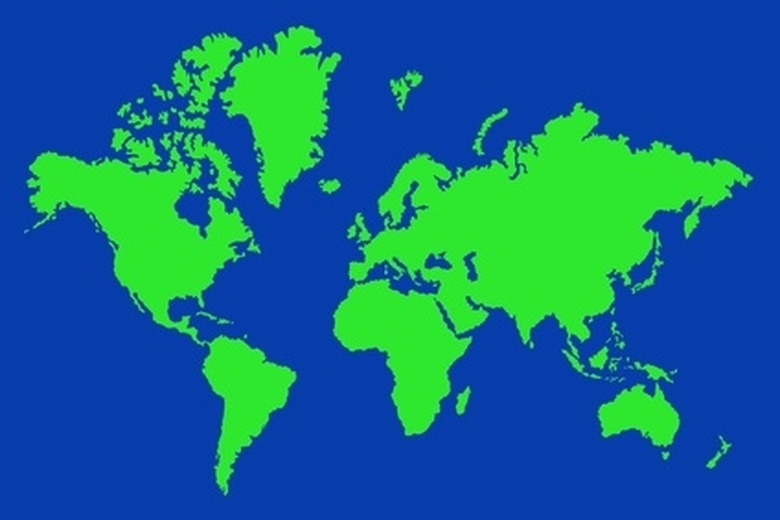How To Use Map Scales
According to the dictionary, a map scale is defined as "a ratio which compares a measurement on a map to the actual distance between locations identified on the map." Since it would be virtually impossible to create a life-size map, maps are scaled-down versions of real life. Using a map scale is important when you are trying to determine the actual distance represented on a map. Most map scales are in terms of miles per inch. The ratio between miles and inches will depend on how large an area the map is representing. For example, a map of the United States will have a much smaller scale than a map of a city, because the map of the city will show much greater detail.
Step 1
Determine the scale of the map. The scale can usually be found in a corner of the map and will tell you the ratio of the two units of measure. For example, the scale might have a line one inch long that represents 100 miles. Other scales might use a ratio to show the scale which shows how many real life units are represented by one map unit, such as how many inches in real life one inch on the map represents. For example, a ratio of 1:6,336,000 would mean that one inch on the map represented 6,336,000 inches, or 100 miles, of actual, real-life distance.
Step 2
Measure the distance between two points of interest on the map using the ruler. For example, you might measure 5.5 inches between town A and town B on the map. You can also use a map scale to determine the area of a plot of land. For example, a plot of land might be 0.25 inches long and 0.1 inch wide.
Step 3
Multiply the number of inches on the map times the scale to determine the true distance. For example, if the distance on the map was 5.5 inches and the scale was 1:6,336,000, the true distance would be 550 miles.
To convert an area, convert the dimensions using the scale and then find the true area. For example, a plot 0.25 inches long and 0.1 inches wide would be 25 miles long and 10 miles wide in real life, so the total area would be 250 square miles.
Things Needed
- Ruler
- Map
TL;DR (Too Long; Didn't Read)
If you are measuring the distance you will have to travel along a road, make sure you account for the curves of the road when you measure. You can use a string to follow the road and then measure the length of string to get a more accurate measurement than trying to measure a curve with a ruler.
Computer programs, like CADD software, allow you to measure not only distances on a map with a click of the mouse, but you can measure area and volume because of the three-dimensional representations in the software.
References
Cite This Article
MLA
Kennan, Mark. "How To Use Map Scales" sciencing.com, https://www.sciencing.com/use-map-scales-5646887/. 24 April 2017.
APA
Kennan, Mark. (2017, April 24). How To Use Map Scales. sciencing.com. Retrieved from https://www.sciencing.com/use-map-scales-5646887/
Chicago
Kennan, Mark. How To Use Map Scales last modified March 24, 2022. https://www.sciencing.com/use-map-scales-5646887/
